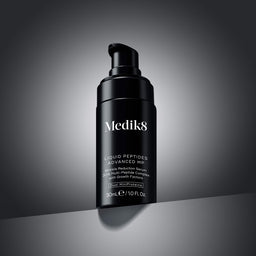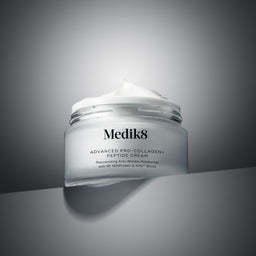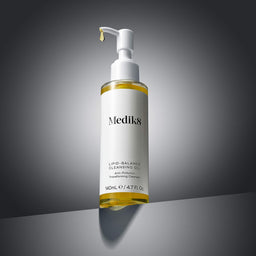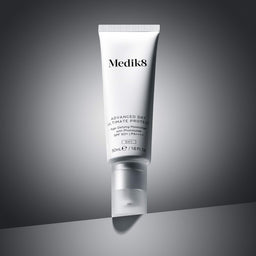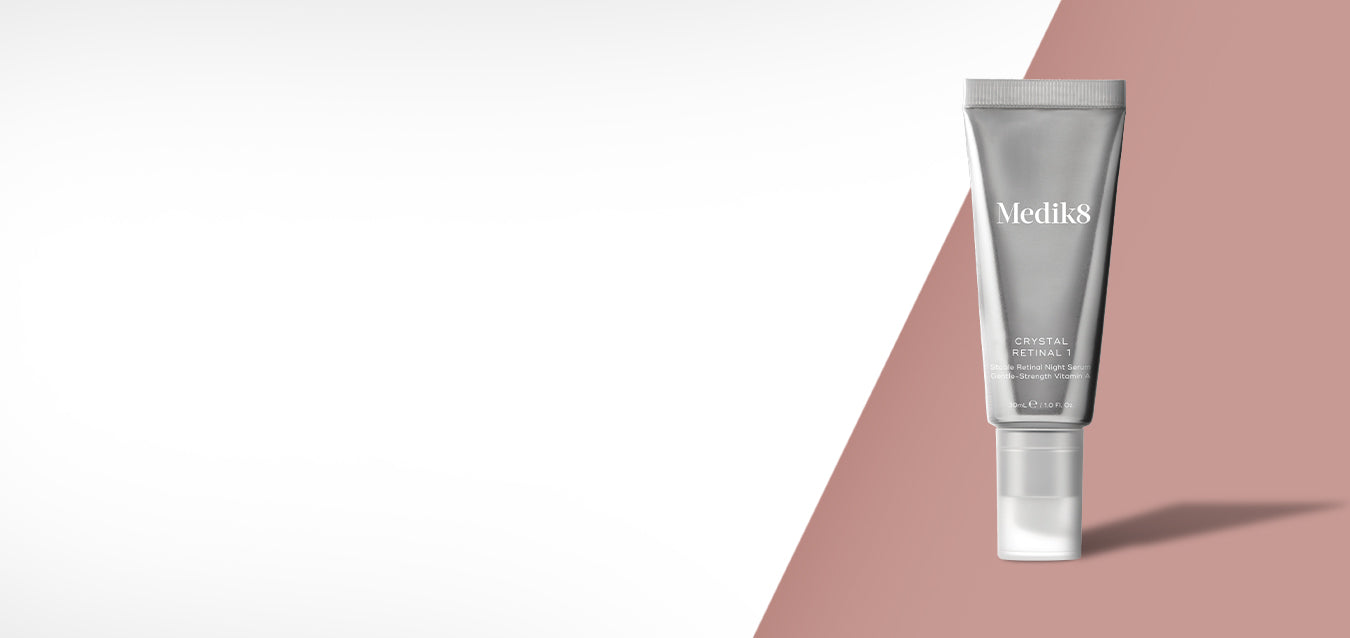In celebration of Rosacea Awareness Month, let’s take a deep dive into the science behind rosacea, and how to deal with sensitive and redness-prone skin.
Rosacea is a dermatological condition which has been estimated to affect up to 5.5% of the global population.[1] It usually causes redness alongside raised papules and pustules, as well as thickened skin, particularly on the nose. Often watery, bloodshot eyes are also a symptom of rosacea.
Unfortunately we still don’t know exactly what causes rosacea, but it is thought to be a combination of an impaired immune system combined with changes in the nervous and vascular system.
Rosacea-prone skin usually has an impaired barrier function, and hence is prone to dryness. Breaks in the skin’s natural barrier function can lead to the invasion of the skin with allergens or sensitisers, which can in turn cause inflammation.[2]
There are many lifestyle factors known to exacerbate redness & rosacea; alcohol, diet and caffeine consumption are important to be mindful of in the quest to control rosacea. UV exposure is also a trigger; so high protection SPF is a must-have in any skincare routine. Heat, cold, wind and even stress can all play their part in causing flare ups.
Redness & Vitamin A
As the Experts in Vitamin A, we are often asked the question; can I use vitamin A if I have redness-prone or sensitive skin?
The good news is that vitamin A is not off limits to sensitive skin, it just means you need to be more mindful of what you are using. In fact, vitamin A has some great benefits which can help sensitive and redness prone skin to increase its resilience. Vitamin A can help to strengthen the barrier function of the skin to minimise dryness and sensitivity and it can also be anti-inflammatory.
Retinal has been found to improve the appearance of redness prone skin
In fact retinaldehyde in particular has been clinically proven to help rosacea-prone skin. A study published in the journal Dermatology investigated the effects of a topical formulation with 0.05% retinaldehyde, in patients with signs of vascular facial rosacea over 6 months.[3] Patients were assessed for signs of erythema (redness) and telangiectasia (dilated, spidery capillaries), over the course of the trial. Around 75% of of patients experienced an improvement in redness, with some also experiencing improvements in telangiectasia. The researchers concluded that retinaldehyde can have beneficial effects on vascular rosacea.
How to use Vitamin A for Sensitive Skin
"Having very sensitive skin, I have to be really careful about what products and ingredients I use. Vitamin A has always been a tricky ingredient for me but I tried Crystal Retinal 1 and I've never looked back. By starting on a low-strength (0.01% retinaldehyde) and introducing it slowly, my sensitive skin was able to get used to it without being overwhelmed or irritated. I've since been through a few tubes of Crystal Retinal 1 and I'm on my way up the Crystal Retinal ladder!" Talonted Lex, Rosacea and Skin Positivity campaigner.
So how should you be incorporating vitamin A into your skincare regimen if you are experiencing sensitivity & redness?
Vitamin A has a reputation for being irritating, and can be intimidating particularly if you are experiencing sensitive skin. The key is to choose a vitamin A which is designed to minimise irritation; all Medik8 vitamin As are formulated with Time Release Technology which drip feeds the vitamin A into the skin overnight, ultimately preventing any potential for irritation.
It is important to start low in concentration of vitamin A and go slow. We have a specifically designed gentle-strength retinal for sensitive skins, called Crystal Retinal 1. Incorporate this slowly into your skincare regime by phasing it into your evening routine; using twice a week for 2 weeks, every other night for 2 weeks, and then every night after that. If at any point you feel irritation, drop back a step on the ladder. If needed drop down your dosage of vitamin A; using 1 pump rather than 2.
Always layer your vitamin A under a moisturiser, to prevent any dryness. You can also avoid applying it to certain areas of the face if necessary, such as around the eyes, crease of the nose and around the mouth, to prevent any dryness or irritation.
Calming Routine
So that’s the vitamin A sorted; what about the rest of your surrounding skincare? Calming, anti-inflammatory, barrier building products are key. Our Medik8 Calming Routine is a great place to start for sensitive skins and those prone to visible flushing looking for a gentle skincare routine.
AM ROUTINE
In Layering Order
| CLEANSER: | Cleanser of choice |
| VITAMIN C: | C-Tetra |
| MOISTURISER: | Calmwise Colour Correct |
| SUNSCREEN: | Advanced Day Total Protect |
PM ROUTINE
In Layering Order
| DOUBLE CLEANSE: | Cleanser of choice |
| TARGET SERUM: | Calmwise Serum (Can also be used in AM, after C-Tetra) |
| VITAMIN A: | Bakuchiol Peptides (Can also be used in AM, after C-Tetra) OR Crystal Retinal 1 |
| MOISTURISER: | Advanced Night Restore |
| BI-WEEKLY AT HOME TREATMENT: | Ultimate Recovery / Bio-Cellulose Mask |
First off let’s build a supportive, yet gentle CSA routine to help build up the skin’s resilience. You’ve got your vitamin A already, Crystal Retinal 1. In the morning, C-Tetra is the perfect vitamin C choice; featuring tetrahexyldecyl ascorbate, a gentle, oil-soluble form of vitamin C. C-Tetra is nourishing yet soft on the complexion for a soothed and protected skin surface. Vitamin C is ideal for mitigating free radicals which can play a role in inducing inflammation of the skin.[2] Sunscreen is an essential in any routine, particularly for sensitive skin. UV light exacerbates inflammation and can even trigger rosacea flares, so make sure you are frequently applying a high protection sunscreen like Advanced Day Total Protect.
Choose gentle surrounding products to complete your routine. Calmwise Soothing Cleanser is ideal for gently refreshing and cleaning the skin. Your priority should be choosing barrier building moisturisers to help support the skin’s natural defence system. Advanced Night Restore contains a clever ceramide complex to help feed the skin’s natural barrier, protecting it from moisture loss and irritation. If you are experiencing visible redness, look no further than our redness neutralising cream Calmwise Colour Correct, which contains mineral green pigments which quickly blend with your skin tone upon application, resulting in a more even-toned complexion. Calmwise Serum can be layered underneath moisturiser to add an additional hit of nourishment and soothing power into the skincare routine.
If you are looking to incorporate exfoliation into your routine, steer clear of physical scrubs. The abrasion can often be too much for sensitive skin. Instead, look for gentle daily chemical exfoliators like Press & Glow. This is based on an innovative type of exfoliating acid, called gluconolactone, a polyhydroxy acid (PHA). This is a larger molecule than traditional AHAs and BHAs, and hence doesn’t penetrate into the skin. Instead, it sits on the surface of the complexion delivering a gentle yet effective exfoliation. PHAs have also been found to help with skin barrier building, which enhances the skin’s resilience to sensitivity.
As always, if you are dealing with rosacea of the skin, we would recommend consulting a doctor or dermatologist for specific skincare advice tailored to your unique skin.
References
[1] L. Gether et al, Incidence and Prevalence of Rosacea: A Systematic Review and Meta-Analysis, Br J Dermatol, 2018, 179(2), pp 282-289. doi: 10.1111/bjd.16481.
[2] A. Cohen et al, Diagnosis and Treatment of Rosacea, JABFP, 2002, 15(3), pp 214-7.
[3] M. Vienne et al, Retinaldehyde alleviates rosacea, Dermatology, 1999, 199(Suppl 1), pp 53-6. doi: 10.1159/000051380.
← Older Post Newer Post →
